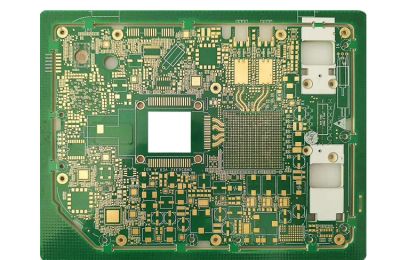PCB layout designers are not usually involved in the planning of the layers used to build the boards they are designing. In order to set up the designer tool, they obviously must know the correct number of layers and their configuration, but beyond that, they will have no further interaction. This is mainly due to three reasons:
PCB performance requirements were not as stringent as they are now.
Fewer materials are used to make PCB.
PCB design tools simply do not have the complex layer stacking and configuration capabilities of today.

Thankfully, this part of the PCB layout process is now very different, as most major design tools come with advanced PCB layer configuration capabilities. Having said that, it is still the responsibility of the designer to complete the process of configuring the right stack of slabs for their design. We'll look at this process and discuss some ideas for building and configuring the board layer stack in PCB design software.
The number of layers on a printed circuit board is directly related to the number of networks that need to be routed. As the demand for PCB circuits increased, so did the number of components and the number of endnetworks. At the same time, the complexity and pin count of active components are increasing, which increases the net number of boards on board. The answer to these increases is to reduce the trace width or increase the number of layers of the plate, or both, which unfortunately leads to higher manufacturing costs.
Although the average number of components on the PCB and the net number increased, the electrical performance of the board also improved. Designers quickly discovered that while wiring used to require four layers and six layers, they actually had to reach eight layers to achieve the desired electrical performance. Some of the reasons for these additional layers include:
1, isolation control impedance routing space is larger.
2. Differential routing is limited to as few layers as possible.
3. Stacking configuration of microstrip line and strip line board layer.
4. Additional plane layer for multiple power supplies and grounding networks.
As board functionality continues to evolve, another factor is introduced into the process of creating a stack of board layers. The higher running speeds of boards now may require more board building materials than previously used boards. The same is true of high-power boards or boards that will be used in harsh environments. These materials may alter the transmission line characteristics of circuits originally calculated for standard FR-4 materials, which in turn may require changes to the layer stack configuration.
With today's advanced electronics, it is critical to create the right plate layer stack to ensure that the board will operate at its high performance. A
nd because we've just covered all the requirements, layout designers are under more pressure than ever to stack correctly. Let's take a look at some of the other difficulties layout designers face.
Today, PCB designers face many complex challenges that PCB designers of the past did not have to worry about. Does this sound like something you have to deal with?
Schedules:
Now, the need to get products to market is more urgent than ever. Not only are companies facing more competitive pressures, but there are other forces at work. The recent COVID-19 pandemic, for example, has led to a frenzy of medical design work to put new medical devices into production to help fight the virus. While all aspects of the design feel pressure to meet these requirements, PCB designers in particular face the challenge of making boards complete quickly and error-free.
Information:
As we noted earlier, the requirements for layer configurations and board materials are becoming more complex every day. Many designers are not familiar with all of these processes or materials and need outside help to create layers of slabs that fit their designs.
Tools:
Some PCB design tools are still not user-friendly enough for designers to use effectively when creating their PCB stacks. This not only slows down work and increases frustration, but can also affect the design of the board.
PCB layout designers face many challenges when trying to get the job done. This is especially true when trying to create a plate layer stack configuration to ensure that the board works as expected while being able to manufacture the board error-free and at cost. Let's take a look at some of the ways PCB design tools can help designers.
PCB CAD tools can do a number of things to help layout designers create and configure PCB layer stacks. The first is to merge the automatic generator or wizard, as shown in the figure above. These tools allow designers to specify stack layers and configurations that require a lot of creation in the database. The next step is to give designers full control over the details of layer stacking, including the ability to specify conductive and dielectric plate materials. Designers should be able to specify values and tolerances and configure how layers should be placed when setting layout parameters.
However, not all the help a designer needs comes from these tools. Designers need a lot of industry knowledge to better understand the materials and processes they work with. Here, designers can benefit from establishing relationships with PCB contract manufacturers to obtain accurate information used to create their board stack. As already said, manufacturers have been doing this for years and they are very good at it. Layout designers should be encouraged to get involved in their PCB CM early so that they have the correct lamination before they start working on their PCB design.